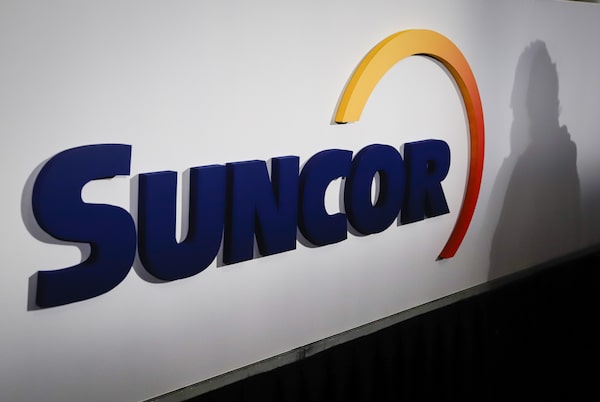
Both ATCO and Suncor are part of consultations for the new federal tax credit.Jeff McIntosh/The Canadian Press
Two Alberta energy companies are teaming up on a proposed hydrogen project outside Edmonton, but they say the federal and provincial governments need to move quickly on regulatory changes to ensure it gets built. They’d also like some cash to help.
Hydrogen, which releases no carbon dioxide when burned, plays a crucial role in Canada’s plan to get to net-zero greenhouse gas emissions by 2050. As federal and provincial governments figure out the best way to develop a robust hydrogen sector to help meet climate goals, Suncor Energy Inc. and ATCO Energy Ltd. have proposed a new facility that would produce more than 300,000 tonnes of hydrogen from natural gas each year.
The facility, near Fort Saskatchewan, would capture about 90 per cent of the emissions generated in the production process. The majority of the hydrogen produced there would be used at the Suncor Edmonton Refinery. ATCO and Suncor say the remaining 20 per cent could be used in the Alberta natural gas grid to further reduce emissions.
In its recent budget, the federal government said it would create a carbon capture, utilization and storage, or CCUS, tax credit. That credit will be key to develop a hydrogen sector in Western Canada, where the fuel is derived from natural gas with carbon emissions trapped via CCUS technologies.
Both ATCO and Suncor are part of consultations for the new federal tax credit, and Suncor chief executive officer Mark Little told The Globe and Mail Tuesday that was part of the reason they brought the project forward now.
“Having a consultation with a specific project so you can say, ‘Look, this is how we can do it. Now, what needs to happen?’ is a lot easier than having a conversation about government policy in the abstract, without actually understanding what the projects look like,” he said.
“Things have to change, because you can’t sit in a regulatory queue for 10 years and expect to achieve Canada’s ambition of significant reductions by 2030. It’s just not going to happen.”
Both Ottawa and Alberta released hydrogen strategies last year, with a view to establishing a $50-billion domestic hydrogen market by 2050. But the success of those plans will require a host of regulatory and policy changes around things like blending hydrogen into the natural gas distribution system and how exactly hydrogen fits into Canada’s new clean fuel standards.
Mr. Little and ATCO CEO Nancy Southern acknowledged that some government programs and regulations have already been put in place to support the development of a hydrogen industry, but said the sector needs further regulatory certainty and fiscal support to help Canada reach its net-zero goals.
Ms. Southern hopes bringing a tangible project to the table can accelerate those discussions and help with well-informed policy discussions.
“It’s going to be critical for Canada if we want to achieve the new expanded targets for 2030 – as well as 2050 – that we get on with this,” Ms. Southern told The Globe. “If there is no certainty, there isn’t going to be investment.”
While Ms. Southern acknowledged that “the path, economically, is going to be challenging” for the new facility, she hopes it can stand on its own as a viable project.
Alberta, Ottawa and industry are all aligned on the development of a hydrogen sector, Mr. Little added, so “if we’re going to do this, we need to move quickly.”
Dale Nally, Alberta’s associate minister of natural gas, said his government has consulted broadly on how best to become a hydrogen leader, and has “a good understanding of regulatory barriers and policy enablers required to achieve our ambition.”
He said clarity around how the province plans to support growth of the sector will be contained in the province’s Hydrogen Roadmap, though there is no date yet for the plan’s release.
Editor’s note: (May 12, 2021): An earlier version of this article included an incorrect date for Canada's net-zero greenhouse gas emissions plan.
Your time is valuable. Have the Top Business Headlines newsletter conveniently delivered to your inbox in the morning or evening. Sign up today.